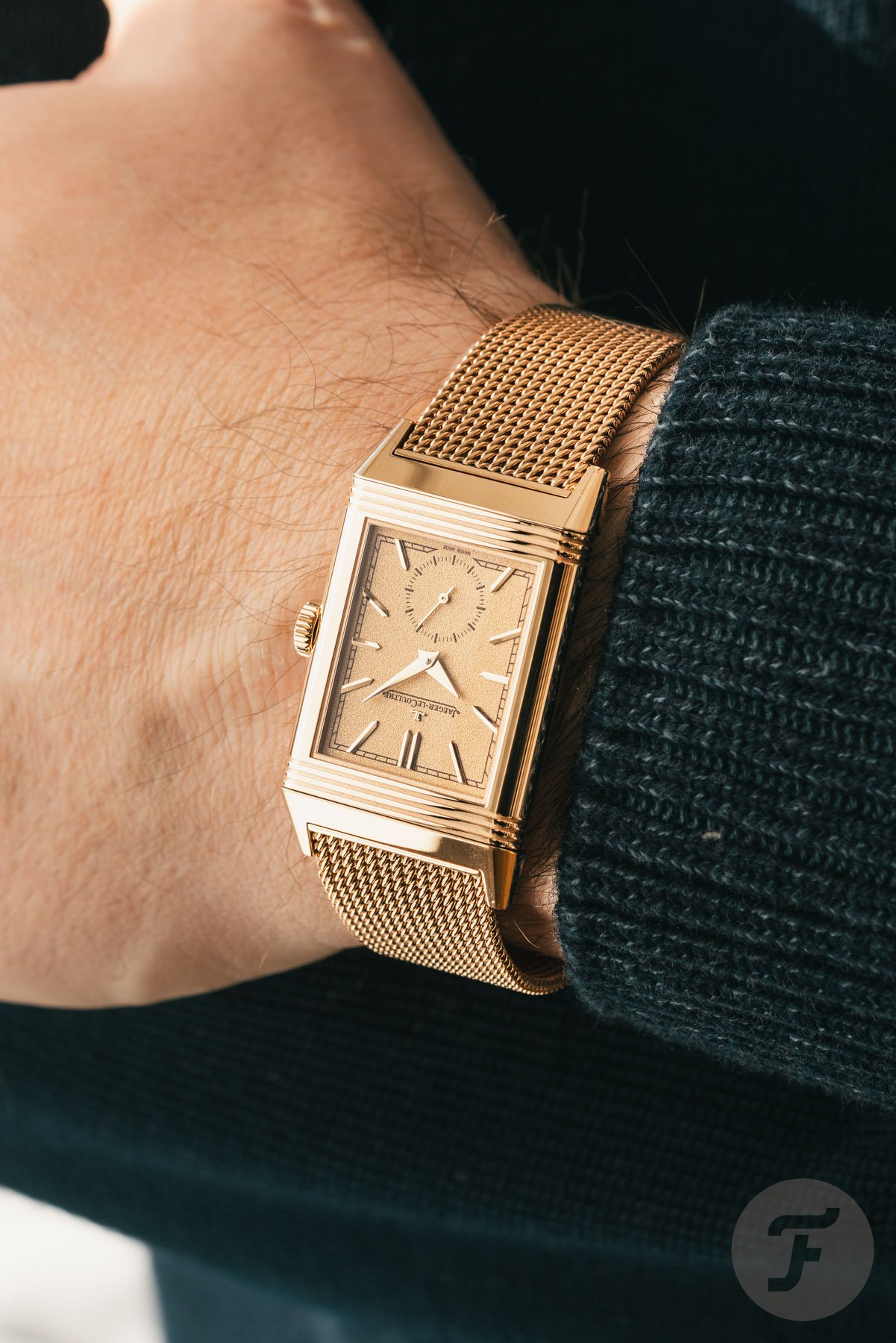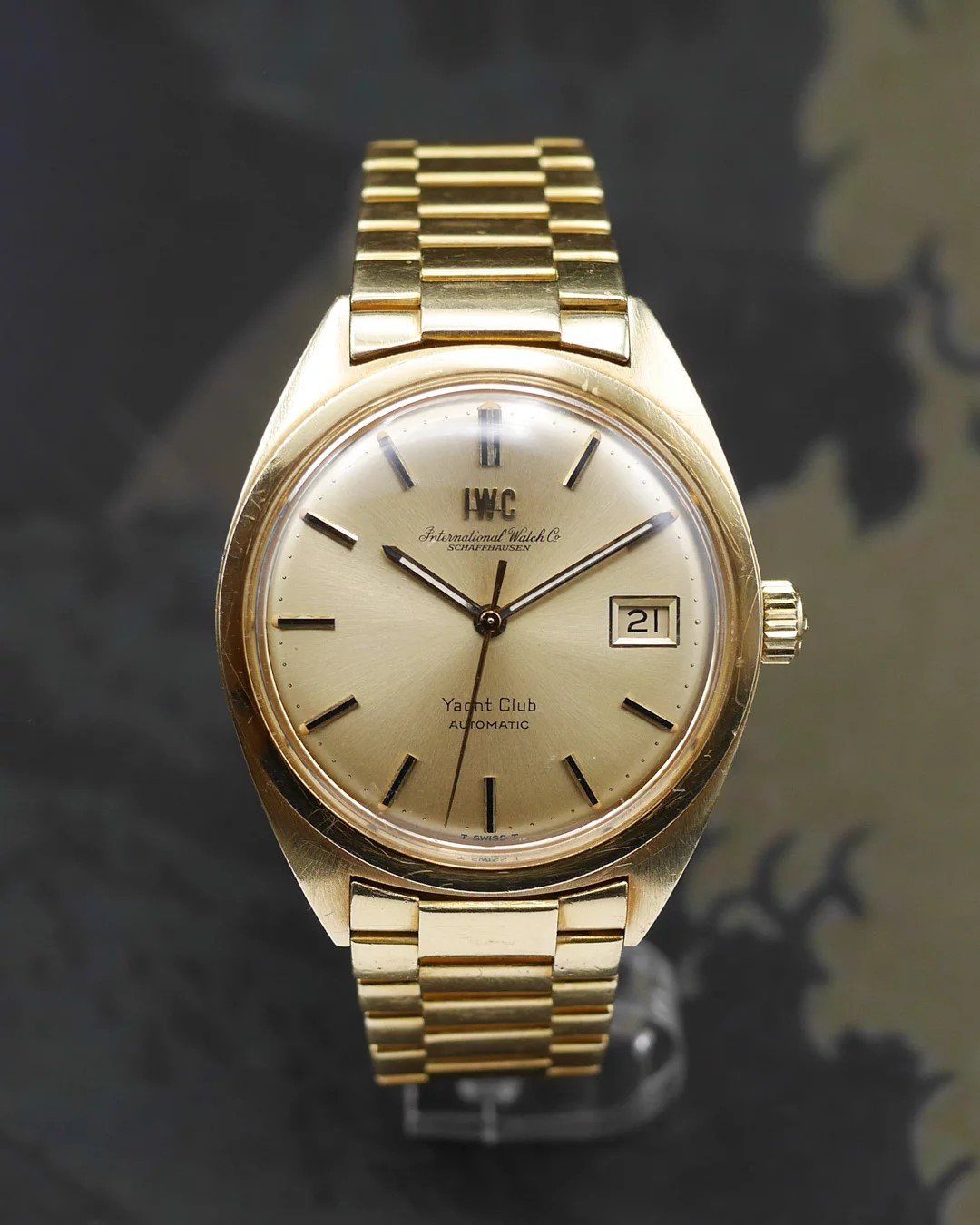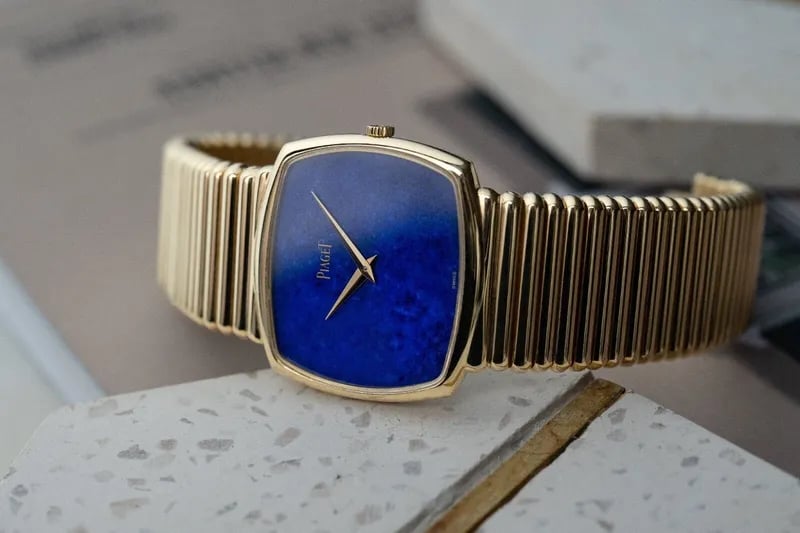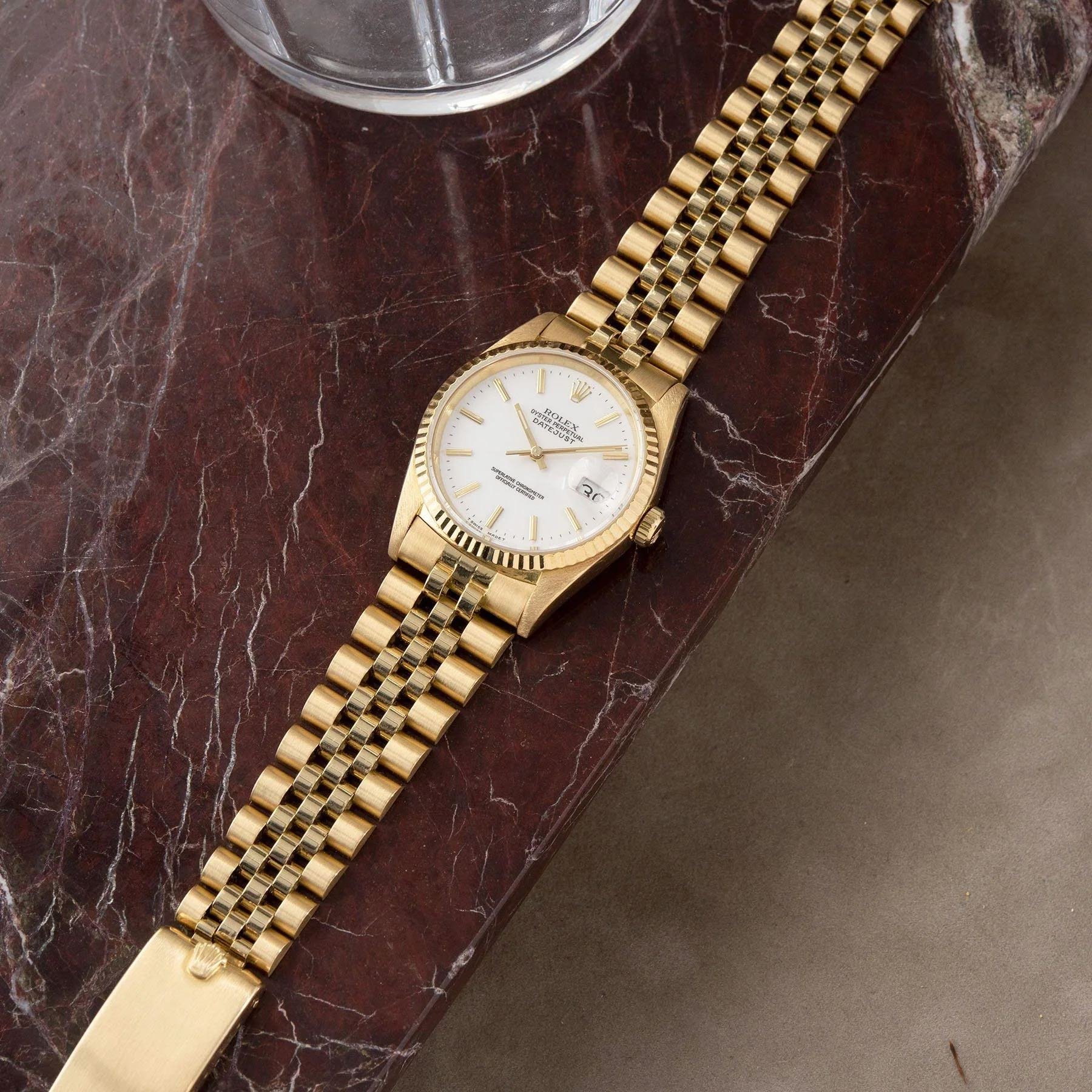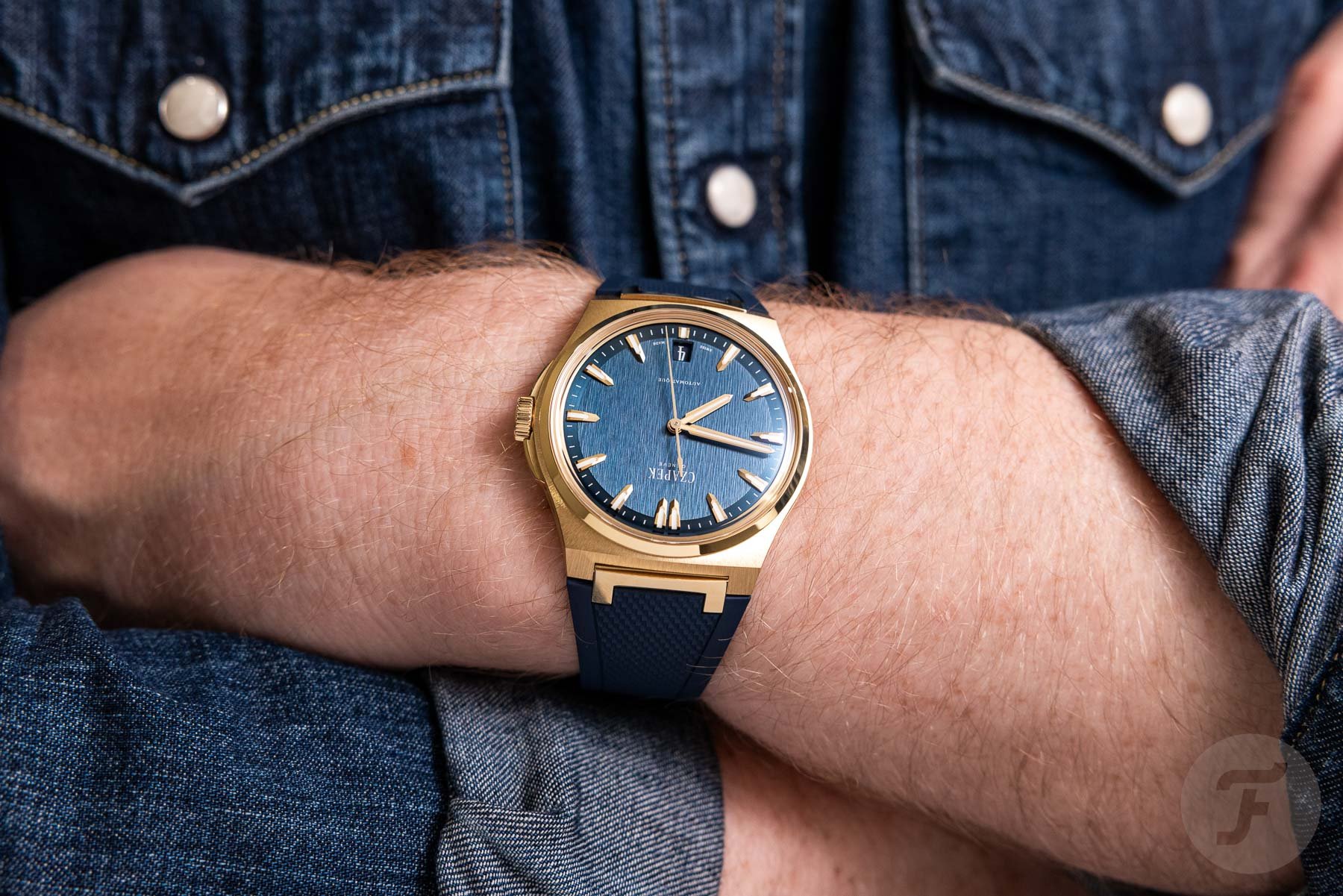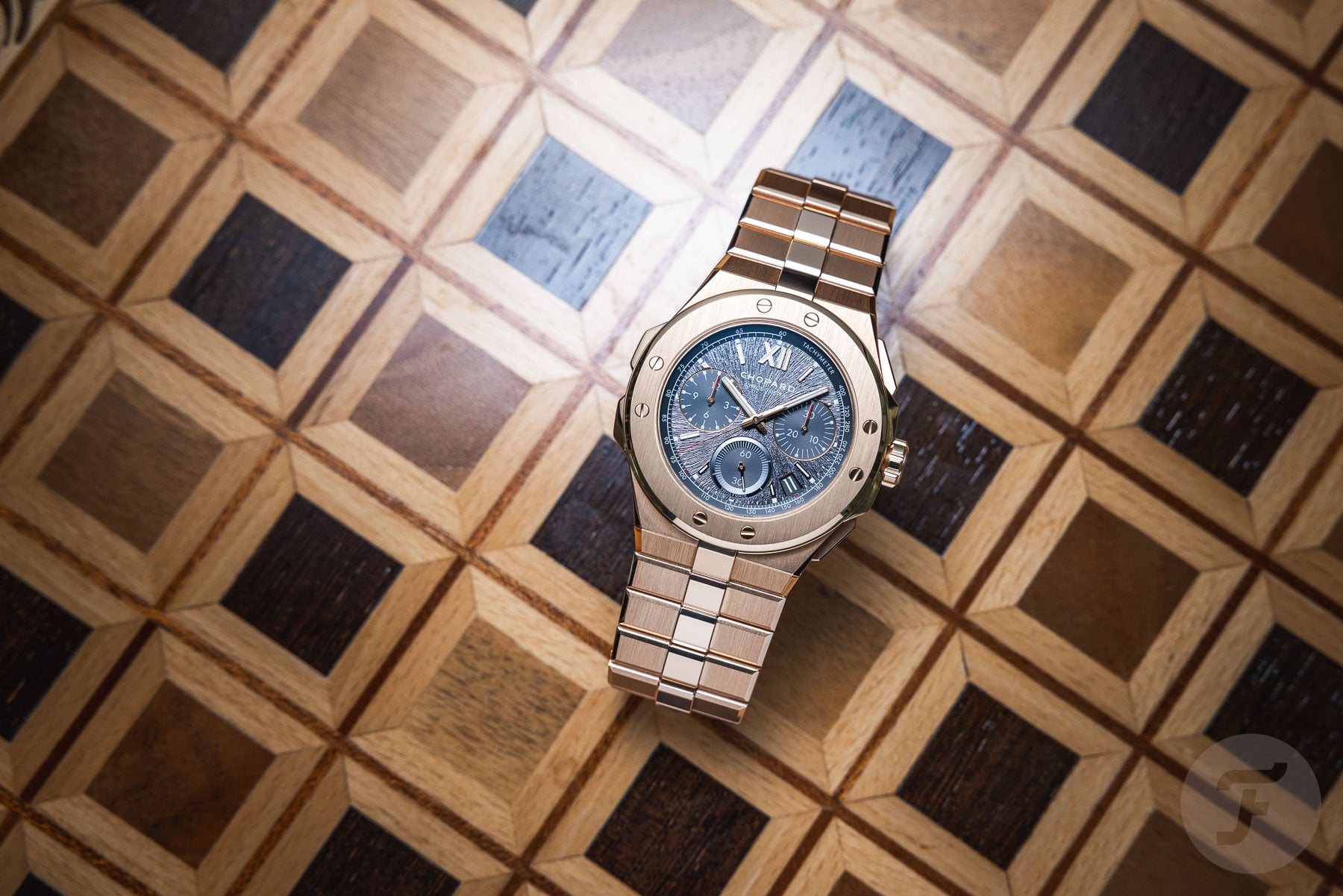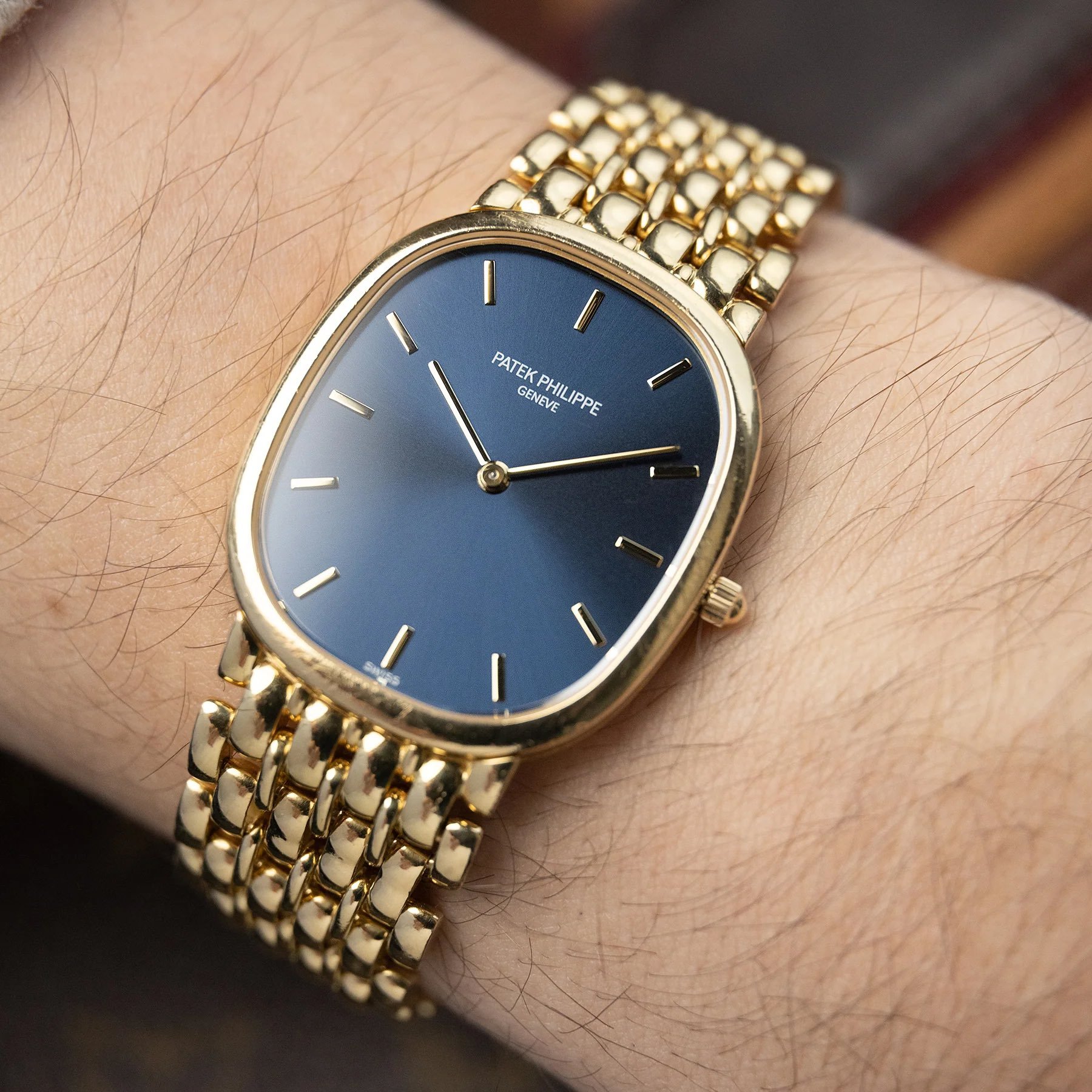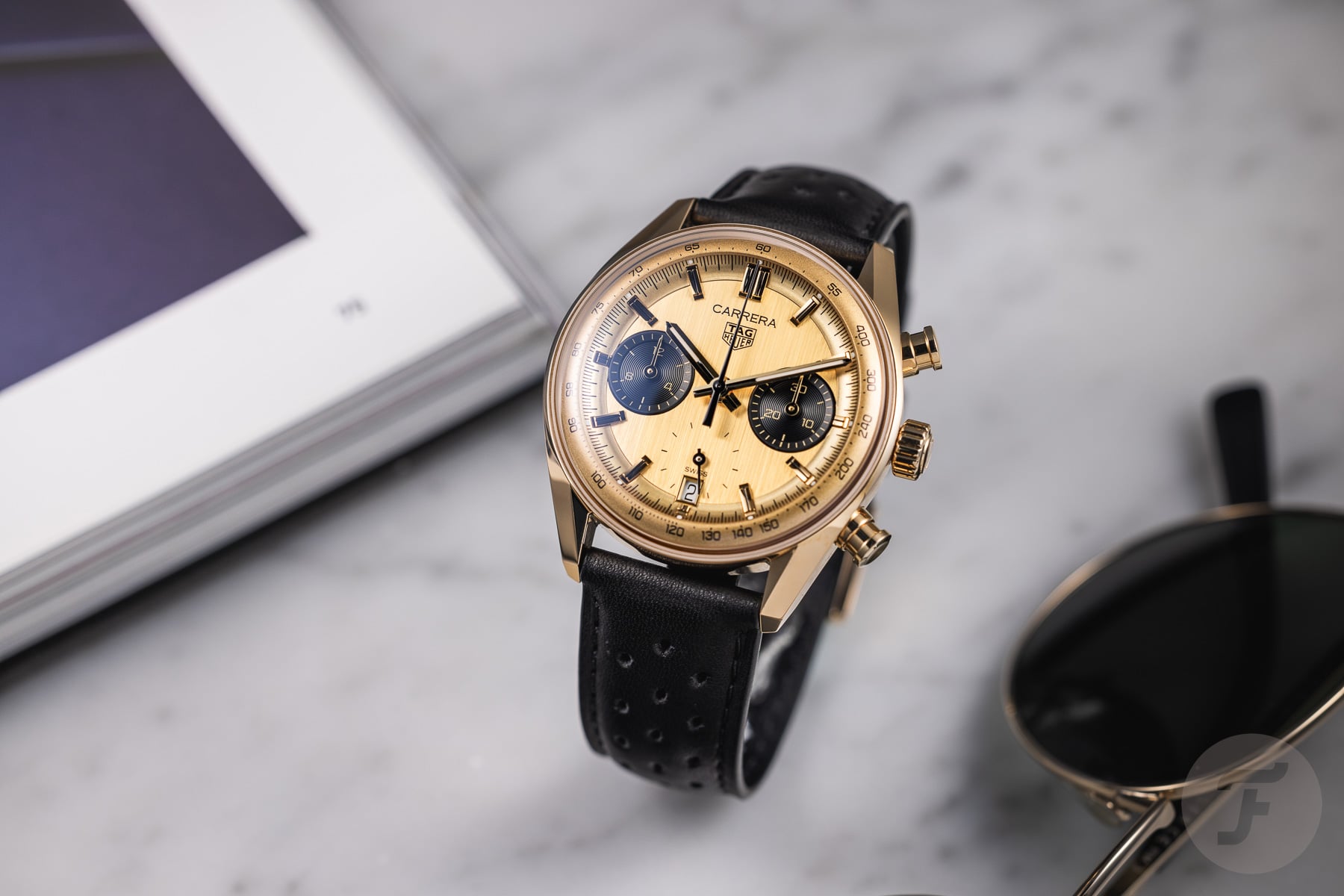Gold Is King — Why Gold Watches Are More Expensive Than The Material Warrants
The gold price stands at an all-time high. Still, gold watches command prices far exceeding the value of the material added to the base price of the equivalent watch in steel. Why is that? What makes gold watches so costly?
The popular answer is because of greed. But that is cutting some corners. Let’s try and find out what drives watch brands to price their precious watches the way they do.
How much gold is in a gold watches, really?
First things first, how much gold are we actually talking about here? Of course, it depends from one watch to the next. A full gold Rolex Day-Date on a President bracelet will weigh about 180 grams with the movement and crystal removed. Naturally, a slender dress watch on a leather strap will contain significantly less, perhaps as little as 40 grams.
If we are talking about 18k gold, we should multiply the material weight by 0.75. So, that means there is roughly between 0.75*40=30 and 0.75*180=135 grams of gold in a wristwatch. Today’s gold price of €92 per gram means you get between €2,760 and €12,420 worth of gold.
So, is an 18k yellow gold dress watch €2,760 more than its steel siblings? No, it isn’t. In fact, the difference is more likely to be four or five times that number. Why is that?
Gold watches have other additional costs
Let’s start with the additional costs of gold watches beyond the material. For starters, the softer material usually requires different treatment in certain manufacturing processes. Even if those treatments aren’t necessarily more costly on their own, the fact that they have to be implemented alongside the regular production process adds some cost.
More importantly, as the watches become more valuable, auxiliary costs go up. Insurance and transportation are two prime examples. Also, with greater investments come greater risks, for which a company might seek greater relative compensation.
Still, while that might explain a bit of a difference, it doesn’t explain the entire gap in price between steel and gold watches.
Understanding margins in watches
It is good to know that many watch brands—like most companies—work with margins on top of their manufacturing costs. Most brands operate within a range of industry-typical margins. Simply put, they multiply their manufacturing/purchase costs by x to arrive at their retail price. Let’s say that margin is 5x, for an imaginary brand. If a bracelet costs €200 to make, it will cost €1,000 at retail. Keep in mind that this isn’t net profit. All indirect costs, overhead, and distributor and retailer margins have to come out of this. As does the brand’s profit, of course.
Now, while this brand might use 5x as its standard markup, it might vary it across elements. Some parts are relatively expensive to produce but carry little perceived value. In such a case, that part might carry only a 3x markup.
The opposite is also true. Some elements carry much greater perceived value than they do inherent value. COSC certification is a prime example. The added costs of getting your watches regulated and certified are relatively minor. The perceived boost in value, however, enables that imaginary company to perhaps 7x its certification, while it uses a 5x markup otherwise.
Seeing gold watches in this light
Let’s go back to our imaginary company, offering an imaginary dress watch in steel for €5,000 at a 5x markup. If we add €2,760 of gold, the resulting watch should cost €18,800.
If you think about it this way, and pretty much all commercial businesses do, the prices of gold watches start to make more sense. Why would a watch brand go through the trouble and investment of offering a gold watch, only to then exclude the added cost from its markup? Any business 101 course will tell you not to produce gold watches in that case. Why tie up more money in a single product if you don’t expect it to come back with the same or greater margins? The gold in gold watches is no more overpriced than the brass dial or the pallet fork is.
If we go back to my point about relative markups and perceived value, you might think precious metals carry great perceived value. While this is true to some extent, it isn’t necessarily enough for watch brands to cash in massively on gold in most cases. While the absolute profit is greater, the relative profit isn’t, per sé.
Closing thoughts
In short, the popular statement that gold watches are overpriced might sound cool, but it is also a bit simplistic and childish. I am not saying it is never the case, but—at the very least—the difference isn’t nearly as great as keyboard warriors suggest.
That said, there are certainly elements where brands feel comfortable implementing greater markups. Similarly, there are other elements where the markup is harder to translate to a sales price. Take, for instance, a double-domed sapphire crystal. This is several times more costly than a flat variant. Still, consumers might not be willing to take the markup on those, especially in the lower segment.
As always, reality is more nuanced and opaque than your average online soundbite. Precious metal is, however, fascinating in that it is the only element where the cost price is publicly known. This makes it an easy target for speculation and DIY math. Still, I hope this simplified explanation makes it clear that it is no scam. At least…no more than most other things.

